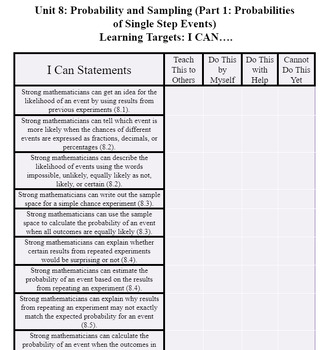7th Grade Unit 8 Open Up Resources I Cans
- PDF
Also included in
- This product is intended to help students self reflect on their learning revolving around the "I can's" from the Open Up Resources lessons. The students will have all the "I can's" for each lesson already on this printable document, along with the unit and lesson it's in, and four categories to helpPrice $12.00Original Price $16.00Save $4.00
Description
This product is intended to help students self reflect on their learning revolving around the "I can's" from the Open Up Resources lessons. The students will have all the "I can's" for each lesson already on this printable document, along with the unit and lesson it's in, and four categories to help them assess their learning of the day. The four categories are "I can teach this to others," "do this by myself," "do this with help," and "cannot do this yet."
This unit aligns with the Open Up Resources 7th grade resource. Therefore, this unit in particular is split into four parts; Probability of Single Step Events, Probability of Multi Step Events, Sampling, and Using Samples. Having this product for my students has created a lot of intentional self reflecting on the learning we have had, and it has also given me the ability to give students quick checks at the end of the period on how they viewed the lesson to go.




